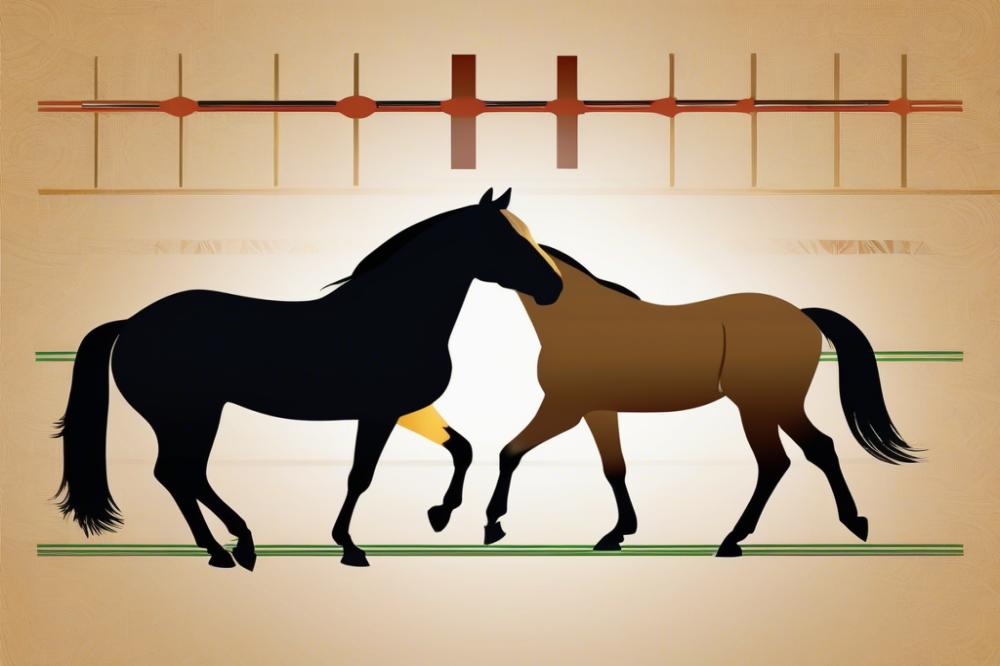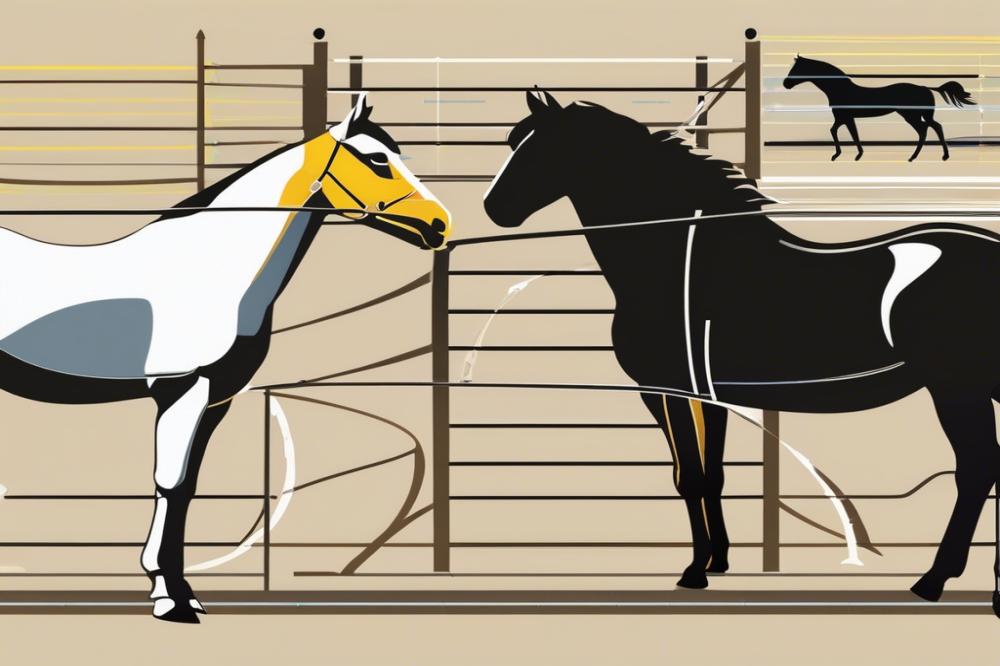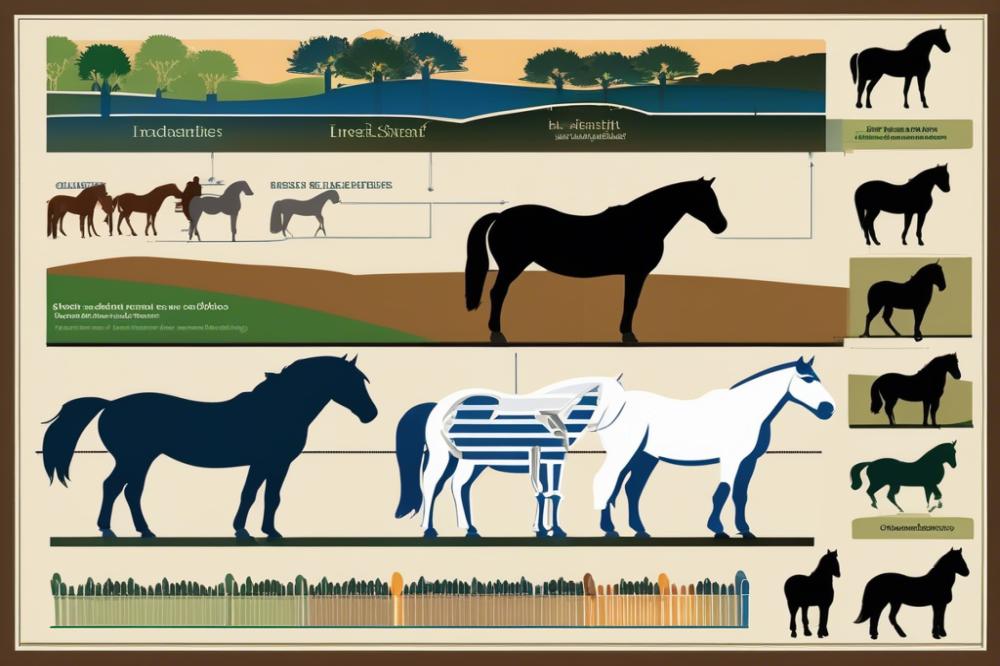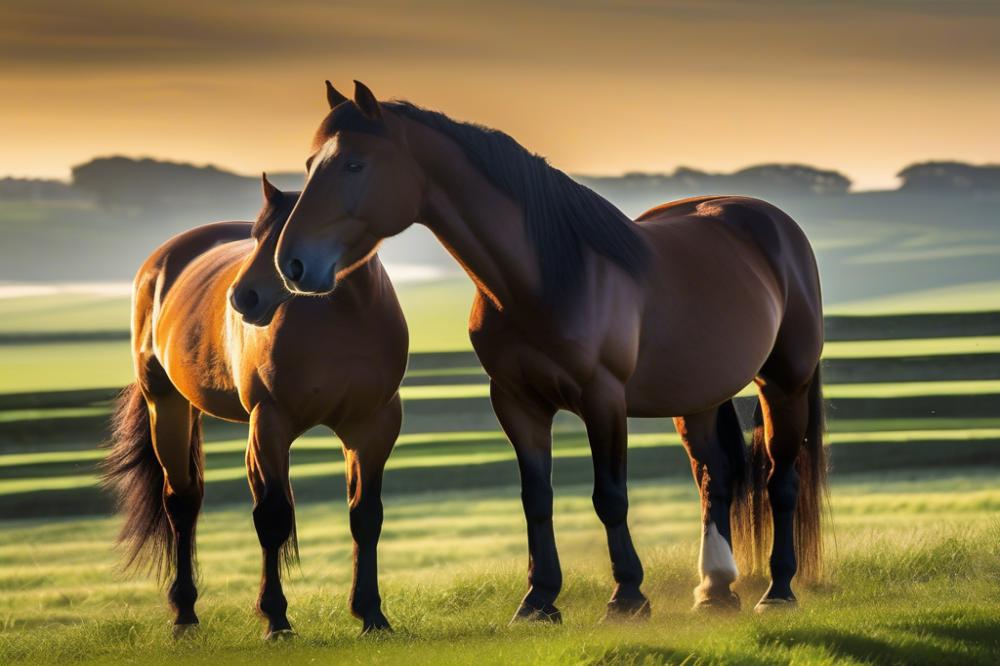Understanding Inbreeding and Linebreeding
In the world of animal breeding, terms like Inbreeding and Linebreeding come up frequently. Both practices involve mating animals that are closely related, but they differ in their purpose and execution. Inbreeding refers to the mating of animals that are closely related within a breed. This method often seeks to produce offspring with specific desired traits, but it can also bring harmful genetic issues. Linebreeding, on the other hand, focuses on maintaining a line of desirable traits while minimizing the risks associated with inbreeding. This approach helps to preserve specific qualities while still attempting to avoid the negative effects of close genetic ties.
genetics plays a crucial role in horse breeding. Understanding hereditary traits is vital for breeders aiming to improve their stock. When horses are bred, the goal typically includes producing animals that excel in particular disciplines or exhibit favorable characteristics. Breeders carefully consider the bloodlines and genetic profiles of their horses. This assessment aids them in making informed decisions to enhance performance, health, and temperament.
The strategies chosen for breeding have profound impacts on the traits passed down through generations. Selecting animals with strong genetic backgrounds can lead to offspring that carry advantageous features. However, there are risks associated with close breeding practices. These risks can include genetic disorders or reduced diversity. A thoughtful approach is necessary to achieve balance. Breeders must weigh the benefits of enhancing specific traits against the potential dangers that may arise. All these considerations highlight the complexity and importance of genetics in the breeding process.
Understanding Inbreeding

Inbreeding refers to the mating of closely related individuals. This practice can happen in various species, including animals like horses. Breeders often do this to maintain specific traits within a line. It sounds straightforward, but the consequences can be more complex.
Genetic diversity is essential for the health of a population. When inbreeding occurs, the gene pool becomes limited. Less genetic variety can lead to negative outcomes. A population with diverse genetics is usually healthier and more resilient. As diversity decreases, the likelihood of genetic disorders increases. This puts the overall health of the animals at risk.
Thoroughbred horses are particularly affected by these practices. Breeders often aim for certain physical characteristics and desirable traits. These goals can sometimes overshadow the importance of genetic health. Risks associated with inbreeding include inherited diseases and reduced fertility. Horse owners may face costly medical issues arising from these genetic flaws. Traits that once seemed advantageous may become detrimental in the long run.
Many examples exist where inbreeding backfired in the equestrian world. Some horses exhibit remarkable skills but also suffer from health problems. Others may perform well but struggle with longevity issues. These stories illustrate the delicate balance between maintaining desirable traits and safeguarding health. They highlight the need for responsible breeding practices.
Exploring Linebreeding

Linebreeding refers to a breeding strategy that focuses on maintaining a specific desirable trait within a population. This method is distinct from inbreeding, where there is a closer genetic relationship between breeding pairs. In linebreeding, the idea is to improve certain characteristics while minimizing negative consequences associated with tighter genetic connections.
One of the primary benefits of linebreeding is its ability to preserve and enhance desirable traits within a breed. Breeders often select individuals that possess specific qualities, such as good health, appearance, or productivity. By selectively mating these individuals, unique traits can be amplified and passed down through generations.
Linebreeding also plays a crucial role in maintaining a certain level of genetic diversity. While it still involves some level of inbreeding, linebreeding allows for the introduction of new genetics at key intervals. This careful approach prevents the problems that can arise from excessive genetic narrowing that may occur with stricter forms of inbreeding.
In livestock and equestrian contexts, successful linebreeding practices can be found in various breeds. For example, specific cattle breeds have seen improvements in milk production through selective linebreeding. Similarly, in horse breeding, famous thoroughbred bloodlines are often maintained through this technique, leading to enhanced performance traits such as speed and endurance.
Genetics and Pedigree Analysis

The role of genetics is fundamental in understanding breeding strategies. Genetic makeup determines traits and behaviors in animals. When selecting breeding pairs, knowing their genetic background is crucial. This knowledge helps minimize health issues and enhances desirable characteristics.
Importance of pedigree cannot be overstated in breeding choices. Pedigrees show a family tree of animals, highlighting ancestry and lineage. Breeders look for specific traits that appear in ancestors. A clear pedigree guides decisions and fosters informed breeding practices.
Various tools and resources exist to analyze pedigree and genetics. Software programs allow breeders to construct detailed family trees. Online databases offer access to vast amounts of historical breeding information. Genetic testing can provide insights into inherited disorders, ensuring healthier offspring.
Genetic diversity is essential in shaping successful breeding programs. A wide gene pool can lead to robust and adaptable animals. Limited genetic variation may result in health problems and weakened traits. Breeding practices must celebrate diversity to foster strong, vibrant lines.
Breeding Strategies and Population Genetics
Selective breeding plays an important role in animal and plant husbandry. It allows breeders to create offspring with specific traits that are desirable. This method has been used for centuries. It aims to enhance qualities such as size, temperament, and health. Breeding strategies are often driven by market demands and consumer preferences.
How Population Genetics Informs Breeding Strategies
Population genetics provides a scientific framework for selective breeding. It involves studying genetic variation within species. Understanding genetic principles helps breeders predict the inheritance of traits. These predictions can guide decisions on which animals or plants to mate. By analyzing genetic markers, breeders can identify individuals that carry traits of interest. This approach enhances the efficiency of breeding programs.
Aligning Breeding Goals with Genetic Principles to Maximize Results
Breeders must align their goals with genetic knowledge. Clear objectives can lead to more effective results. For example, choosing the right breeding pairs can reduce the risk of genetic disorders. Careful planning can also increase the chances of producing offspring with desired traits. Utilizing genetic testing offers a way to make informed choices. In addition, monitoring population health is crucial. A diverse gene pool can help maintain vigor and adaptability.
Ethical Considerations in Breeding Practices
Ethics plays a significant role in breeding practices. Breeders should prioritize animal welfare and health. Breeding for extreme traits can lead to health problems. For instance, selecting for flat faces in certain dog breeds often results in respiratory issues. Breeding for performance, like in racehorses, may come with its own set of risks. Breeders face the responsibility to consider the long-term effects on animals. Responsible practices not only contribute to the welfare of the animals but also build public trust.
Final Thoughts on Inbreeding and Linebreeding
Understanding the concepts of inbreeding and linebreeding holds great significance in the world of animal breeding. By grasping these ideas, breeders can make informed choices that greatly impact the genetic health of their animals. Careful consideration of these practices can lead to better overall outcomes, resulting in stronger and more resilient horses.
Informed breeding decisions are essential for improving the genetic diversity within a population. Breeders who seek knowledge about their animals’ lineage can better select mates that complement each other’s strengths and weaknesses. Such informed choices can minimize potential health issues often linked to genetic similarity.
Looking ahead, future perspectives on breeding strategies seem promising. Continued genetic research is set to play a vital role in enhancing horse breeding practices. Advances in technology may help breeders understand genetic markers better, leading to more precise breeding approaches.
Overall, taking the time to learn about inbreeding and linebreeding is crucial. It not only fosters responsible breeding methods but also supports the welfare of horses. Breeders who prioritize these factors are likely to witness significant benefits in their breeding programs.



